About this Blog: Sun Temple Modhera is one of the finest temples of India and has been on my bucket list for a long time. Located in Mehsana district of Gujarat, Modhera Sun Temple is an excellent example of medieval temple art and architecture of India. Read this blog to know about the Sun Temple, its history and architecture and other important travel information.
Being a Bengali living in Kolkata, a few of my childhood vacations were spent in Puri, Odisha that also includes a trip to Konark. Well, the place is famous for the Konark Sun Temple, one of the few temples dedicated to the Sun God found in India. It was just a temple to me then (spare me, I was only a kid that time), but later, it definitely intrigues me. Much later, we visited the Martand Sun Temple in Kashmir. And then I was counting my days for an opportunity to visit the Sun Temple Modhera in Gujarat.

Opportunity came in the form of #AllIndiaInfluencersmeet2021 organised by Gujarat Tourism when we travelled to Gujarat for a fun filled 6 days to explore Rann Utsav and parts of Kutch along with a few other gems of the state. No wonder we grabbed this chance, because I had to visit another temple dedicated to the Sun God.
Importance of Sun from the Ancient Times

The Sun has always held a special place in the minds of ancient people. It has been glorified and deified, considered to be the ultimate source of energy on the planet and has been revered supreme amongst all stars of the planet.
Parmenides, a Greek philosopher of the fifth century BCE had enthused: “Thou shalt know the substance of the sky, and all the signs in the sky, and the resplendent works of the glowing Sun’s pure torch, and whence they arose”.
Interesting Fact – Etymology of Sun
- Old English – sunne
- German – sonne
- French – soleil
- Italian – sole
- Greek – helios
- Latin – sol
- Swedish, Danish and Norwegian – sol
In ancient times, the Sun was perceived as a solar divinity and was honoured accordingly. Infact, in the British Isles between five and six millennia ago, wise men monitored sunrises so effectively that they learnt how to prepare a practical 365-day calendar-clock to mark the eight part-seasons.

Ancient India, too, had temples dedicated to the Sun God. The Kings worshipped Sun God and built ornate places of worship to venerate the Sun. And believe me, these temples were quite scientifically built to demonstrate the significance of the Sun in the life of people. Despite being an important deity, there are few Sun Temples in India. Just like the esoteric Yogini Temples in India, I find the Sun temples equally interesting and intriguing. The Sun Temple Modhera in Gujarat was thus in my bucket list for a long time and I was more than happy to visit this beautiful temple, or I would rather say, a sonnet on stones.
Sun Temple Modhera

Modhera Sun Temple is located in the village of Modhera in Mehsana district, located about 100 km from Ahmedabad. The temple is equally awe-inspiring as that of the Konark Sun Temple. However, the Sun Temple Modhera is in a better condition than the one in Konark. Saline weather has taken its toll on the temple structure in Konark. And the Martand Sun Temple in Kashmir is in ruins. So, I was quite thrilled to see the wondrous architecture and the intricate stone carvings of this Sun Temple in Modhera.
History of Sun Temple Modhera

The exquisite Sun Temple Modhera was built by King Bhimadev I of the Solanki or Chaulukya dynasty in 1026 CE. The Solankis were believed to be Suryavanshis, or the descendants of the Sun God and hence, a temple dedicated to their dynastic deity.
Sun Temple Modhera is contemporary to the Chola Temples in South India and the Chandela Temples in North. It was built in a time when temple architecture was at a peak in India and truly, the Modhera Sun Temple is one of the finest examples of temple architecture of medieval India.
There is an upside-down inscription on the back wall of the shrine that reads “Vikram Samvat 1083”. This roughly depicts the period 1026-27 CE. This is one of the reasons to believe that the temple was built during this period.
Just imagine yourself in the early 11th century. It was a time when this temple was built. So many artisans and sculptors might have worked on it making it their masterpiece. The king would have come to offer his prayers in this temple. Temples at that time were not only a place for prayers, but also were places to practice music and dance.
Even when they are in ruins, they seem so enthralling. Because, every stone tells a story of the past.

Stories of Destruction
Inside the main Garbhagriha, is a void in the place of where the Sun deity used to be. It is believed that the main idol of Surya Devta or Sun God was made of pure gold. He was depicted as sitting on his chariot with 7 horses and his Sarathi driving the chariot. The idol sat on a dip plinth inside the Garbhagriha or the main sanctum. It is also said that the idol was studded with diamonds that could light up the whole temple. Below the idol was a chamber that was filled with gold and other precious gems.
However, today, you can only see a pit inside the Garbhagriha. This very sadly depicts the tale of plundering. The temple was first attacked by Mahmud of Ghazni around 1025. King Bhimdeva was not successful in warding off this attack and Mahmud left with his loot. The temple was rebuilt again. Sun Temple Modhera was again attacked and plundered by Alauddin Khilji at a later date.
Local legend says that some Brahmin families had hidden the idols with them during the time of attacks, thereby saving the idol. But all this is hearsay and nobody knows the whereabouts of the idol.
There is also a belief that an underground path from the temple leads all the way to Patan, the capital city of the Solankis.

Legends of Sun Temple Modhera
Sun Temple Modhera finds mention in the ancient Hindu texts of Skanda Puran and the Brahma Puran. It is believed that when Ram was returning from Lanka after defeating and killing Ravana, he wanted to do penance for killing a Brahmin. To the uninitiated, Ravana was a Brahmin.
Ram spoke about his dilemma Guru Vashishtha and he pointed Ram to Dharmaranya or the forest of the Dharma. Ram performed a Yagna here and then established a village known as Sitapur. This village later came to be known as Modhera.
Architecture of Sun Temple Modhera
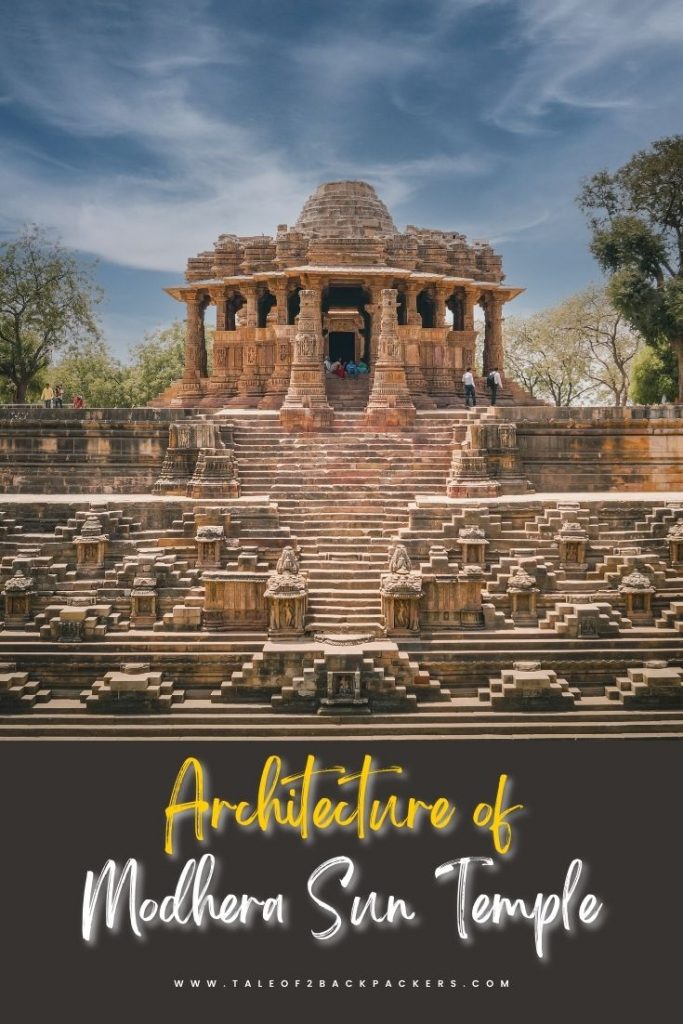
The magnificent Sun Temple in Modhera was completely made of sandstone and is built in the Maru-Gurjara Style of architecture. The temple consists of three main components –
- The central shrine or main temple consists of a Garbagriha and a mandapa called as Gudamandapa
- A Sabha Mandapa
- A kunda or a stepped water tank
The temple construction is believed to have been completed by the 11th century CE, but the structures were built in phases with the Kunda being built first, followed by the main shrine and then the Sabhamandapa.
Main Shrine

The main shrine is divided into a Garbhagriha (11 sq feet in size) and a Gudamandapa. As I mentioned before, the idol of the deity has been lost inside the Garbhagriha and there is now only a void in the place where the deity used to be.
The main sun temple is erected on a plinth that looks like an inverted lotus. Lotus has a significance here, as well. Lotus is a flower that responds to the sun rays and thrives in direct sunlight.
On top of the lotus petals is a panel carved with elephants. This is known as Gaj-Petika. Above the Gaj-Petika, the entire human life cycle is carved right from the time he is conceived till the time of his death.


The temple also has erotic carvings, which can also be seen in many other temples of that era.
The doorway is carved with images of Surya Devta surrounded by dancers and amorous couples. However, many of these sculptures are badly mutilated. The structure was once surmounted by a Shikhara that has collapsed over time.

In most of the sculptures, Surya is seen with two lotuses, one in each hand. He is being driven by seven horses. In these sculptures, Surya is also seen to be wearing boots and long caps. Most of the art historians believe it to be a Central Asian influence.
Sabha Mandapa

The Sabha Mandapa is the most opulent and intricately carved structure in the Sun Temple modhera Complex. The external and the internal walls are exquisitely carved with beautiful sculptures. The most magnificent feature of the Sabha Mandapa are the beautifully carved pillars carrying Torana arches in alternatingly semi-circular and triangular design.
The ceiling of the Sabha Mandapa is intricately carved. You have to see it to believe it!
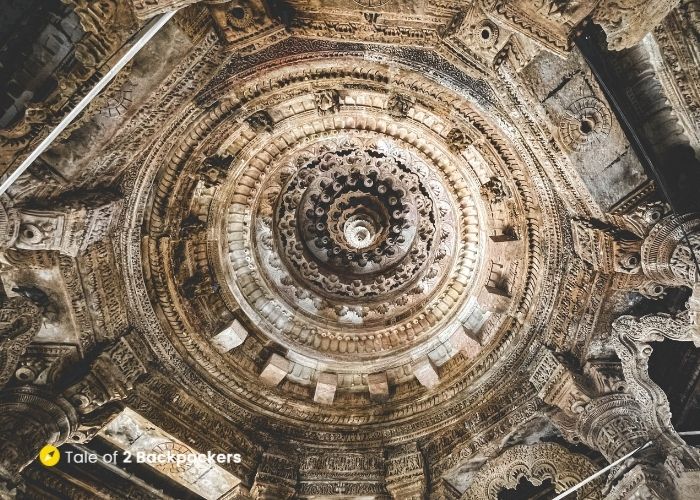
It is said that there are 52 pillars in total. It signifies the 52 weeks of a year. The heavily sculptured pillars have scenes from the Ramayana, Mahabharata and Krishna Leela.
Eminent archaeologist, Hasmukh Dhirajlal Sankalia believes these carvings to be one of the first sculptural representations of the scenes of Ramayana in an ancient temple of Gujarat.
The Sabha Mandapa was perhaps used for public functions, be it religious or social. It is probable that performances and public meetings were held in these Mandapas.

In front of the Sabha Mandapa, there stood a Kirti Toran. Basically, the Kirti Torans were usually built by the kings after they won over some war to commemorate the victory. Unfortunately, the and the torana (arch) has disappeared and only the pillars remain. Through these pillars, a flight of stairs leads to the Surya Kund.
Surya Kund

The Surya Kund in Sun Temple Modhera is a rectangular tank in the form of a stepwell on the eastern edge of the temple complex facing the Sabha Mandapa. It has pyramid shaped steps forming interesting geometric patterns. From the ground level, the Kund gradually proceeds to the water level through the terraces and steps.
What is interesting about the Surya Kund is the presence of a number of small and large temples in the niches of the walls and steps. I could see a few temples dedicated to Lord Ganesha and Lord Shiva. I also saw a temple dedicated to Shitala Mata.

It is believed that originally, there were 108 temples on the steps. How many remains today I really do not know. But these small temples on the Kund look extremely beautiful and pleasing to the eyes.
It is believed that the steps of the Surya Kunda are a mirror image of the Shikhara of the temple, which no longer exists. It symbolises the union of fire and water.
Surya Kund is also known as Ram Kund because of the association of Lord Ram with the place.
Our Experience at Sun Temple Modhera
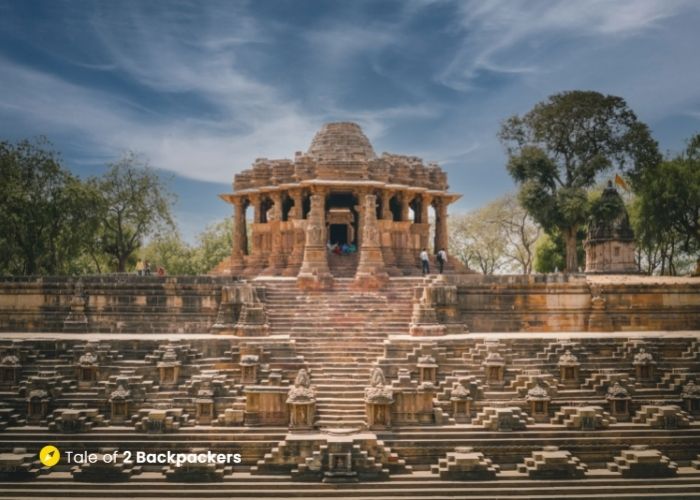
The Sun Temple Modhera is beautiful. The first thing that I noticed on entering the temple complex was the huge Kund or water tank and then the temple. I looked on at the temple mesmerised while our guide told us the stories and legends of the Sun Temple, Modhera. After all, a grand architectural delight like this is bound to have stories and trivia associated with it.
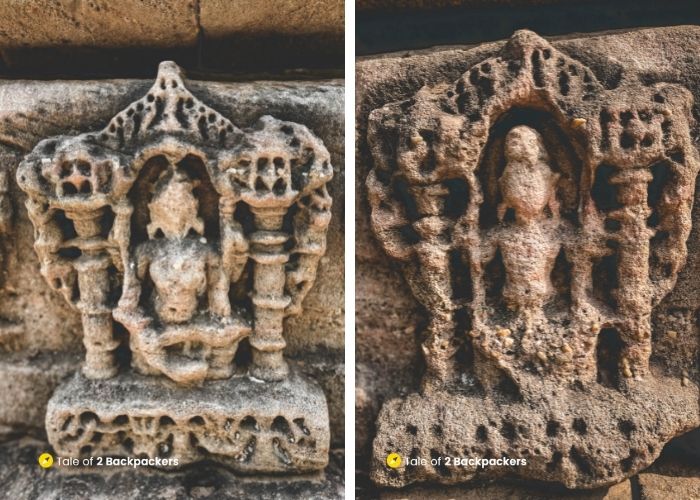
As we crossed the Kund and entered the Sabhamandapa, I was even more spell bound. The sculptures, the carvings were simply exquisite. I kept wondering about the skill of the sculptors and artisans of those times who could carve out life out of dull stones and create stories that would live on forever. The lintel beams, frieze, columns, ceilings and all possible surfaces were covered with carvings. What could I possibly do but look around in awed admiration?

Today the huge temple complex lies in ruin (though it is one of the best maintained monuments by ASI) that speaks of tales of immense wealth and grandeur of the past. It also speaks volume about the society of that time.
Some Interesting Facts about the Sun Temple Modhera
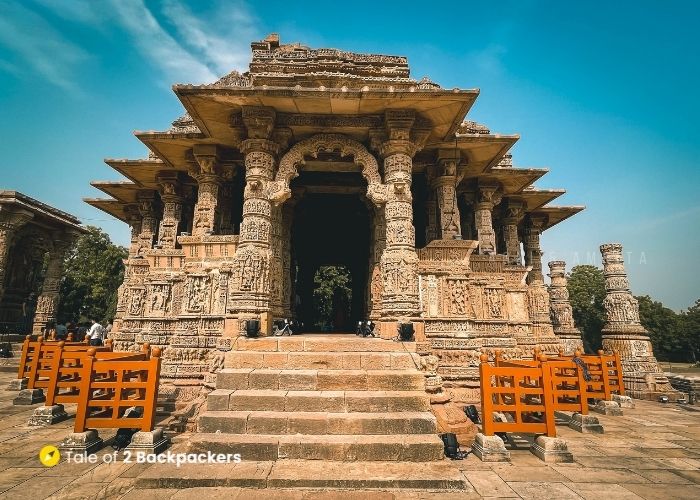
- Modhera Sun temple is located near the Tropic of Cancer at a latitude of 23.5835° N, 72.1330° E facing the east. The co-ordinates for Tropic of Cancer are 23.4999° N, 85.4866° E.
- During the solar equinoxes, the first rays of the sun fall straight on the temple illuminating the idol of Sun God within it. Though the idol is no longer present, it just gave me goosebumps to imagine the beautiful image of the dawn. Isn’t this quite an architectural marvel?
- The sun shines on the top of the temple during summer solstice without casting any shadow.
- It is said that no kind of plaster or limestone was used for the joints of the temple. They were all structurally balanced to keep the temple erect. I had seen this at Kakanmath Temple in Morena, as well, where no material was used for the joints in the temple.
- The Sabha Mandapa opens up in 4 cardinal directions in perfect alignment. There are 52 pillars in the Mandapa depicting the 52 weeks of the year.
- The carvings of the temple depict stories from Hindi epics like Ramayana and Mahabharata and other Puranas. The carvings also depict elements of Fire, Air, Water and Earth signifying their unity with the Sun.
- It is believed that Ram and Sita had come to this place after killing Ravana. So, the Surya Kund is also known as Ram Kund.
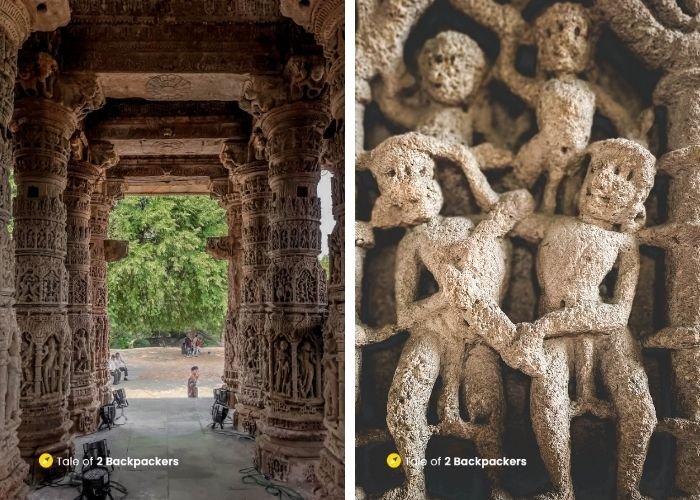
How to reach Modhera?
The nearest Airport is at Ahmedabad, which is well connected to the rest of the country by regular flights. Ahmedabad is located at a distance of 100 km approximately from Modhera and takes about 2 hours to reach.
You will get government and private buses from Ahmedabad and Vadodara and other cities of Gujarat to Modhera. You can also hire a taxi to reach Modhera.
The nearest Railway station is Mehsana. You can take a train from Ahmedabad to reach Mehsana, which is 25 km from Modhera. From Mehsana, you can hire a car or get a bus to reach Sun Temple Modhera.


What is the best time to visit Sun Temple Modhera?
The summers are quite hot in the western part of the country. So the best time to visit Modhera as well as Gujarat will be between October to March.
The Modhera dance Festival is scheduled every year in January.
Photography Tip: Try to visit during early morning and late afternoon for better photographs.
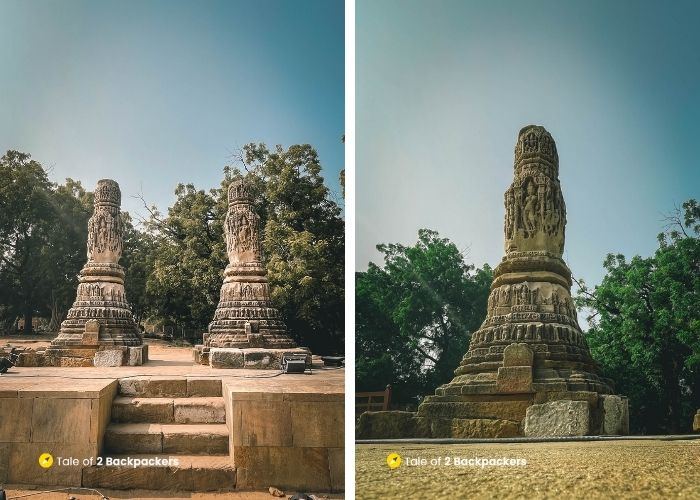
Entry fee at Sun Temple Modhera
Entry fee to Sun Temple Modhera is INR 15 for Indians and INR 200 for foreign tourists.
Photography is free of charge. However, you are not allowed to carry a tripod inside the temple premises and cannot do professional videography without permission. Mobile phone videos are allowed.
You can also hire a guide for INR 300 who can explain to you about the place, histories and legends of Modhera Sun temple. It is sometimes interesting to get a local perspective of a place.
Temple timings: 7.00 Am to 6.00 PM
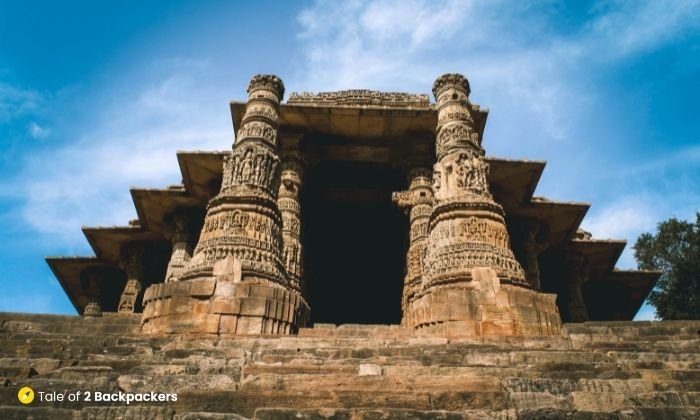
Where to stay in Modhera?
Mehsana has a few hotels, but it is better to stay at Ahmedabad and do a day trip to Modhera.
You can book your stay through Booking.com here.
Booking.comAncient architecture, ruins had always impressed me to a great deal. I can literally see the stories of the past through the stones and carvings. Modhera Sun Temple was no exception. It is one of the most beautiful Indian temples I have seen and visiting there helps me reach the goal of visiting all the important sun temples of India. The Katarmal Sun Temple in Uttarakhand is left now!

So when you are in Gujarat, do not miss to visit this architectural gem of India.
Do you think the Modhera Sun Temple to be an amazing example of architecture? Have you visited Modhera yet? Let us know in the comments below.
If you like this post and find it useful, please share this with your family, friends and neighbours. And always, travel responsibly.
Pin it for a later read!
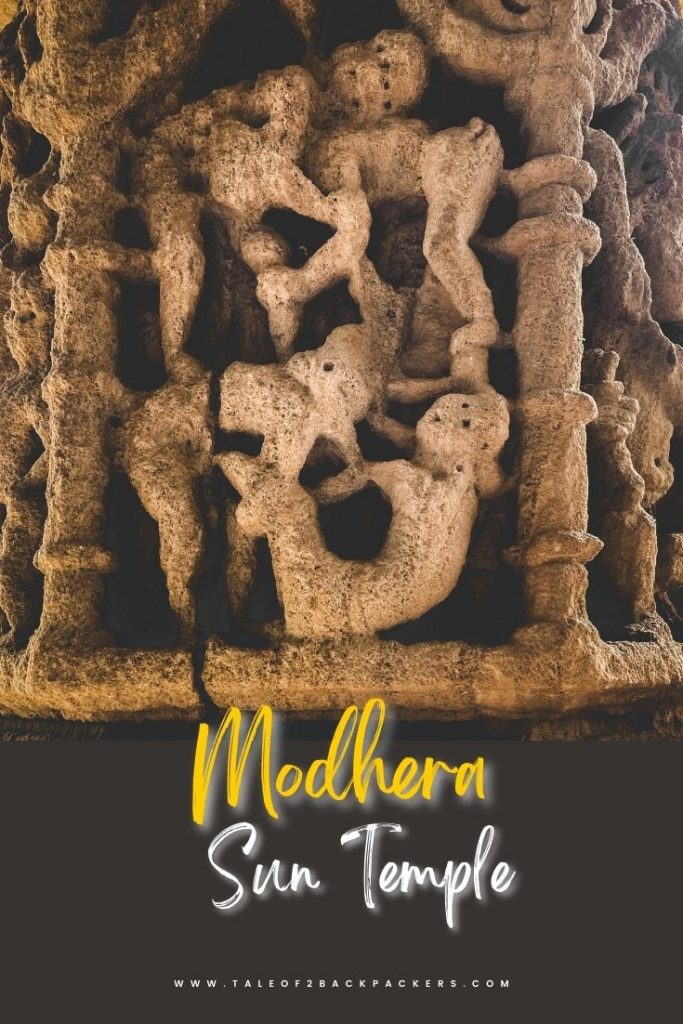


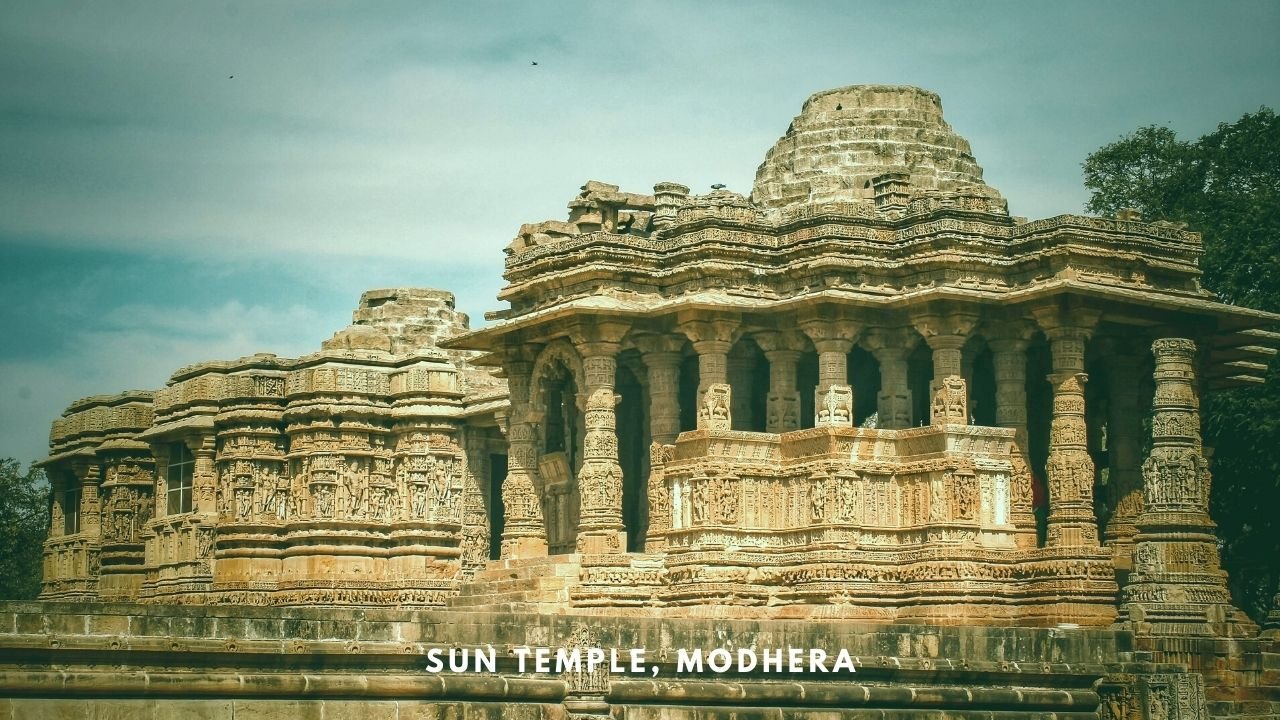

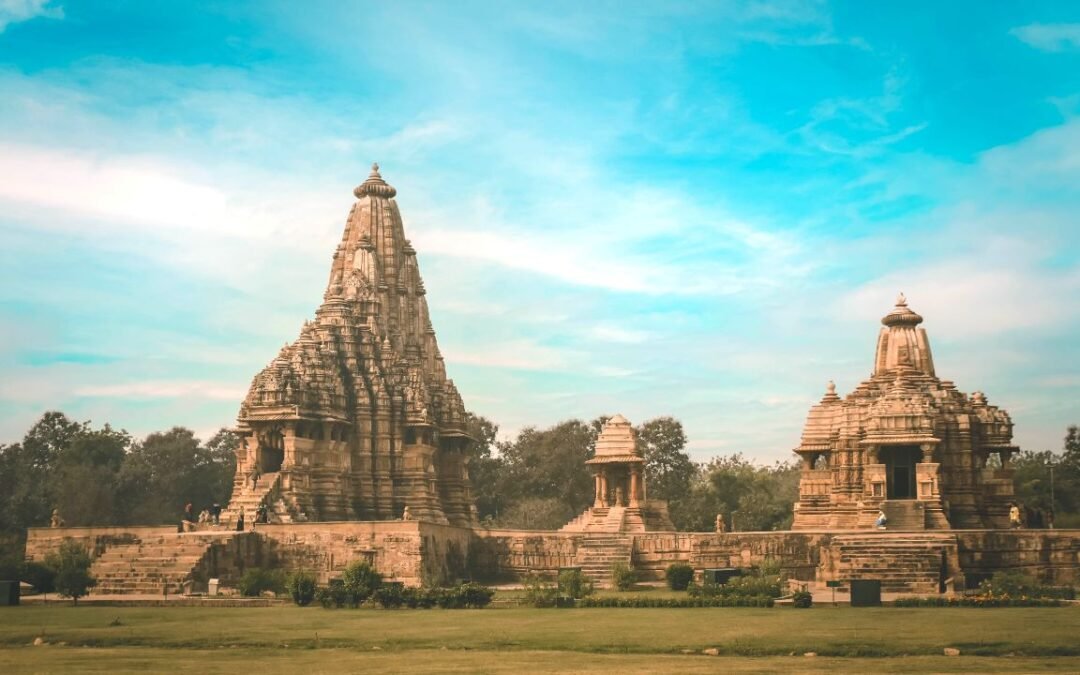






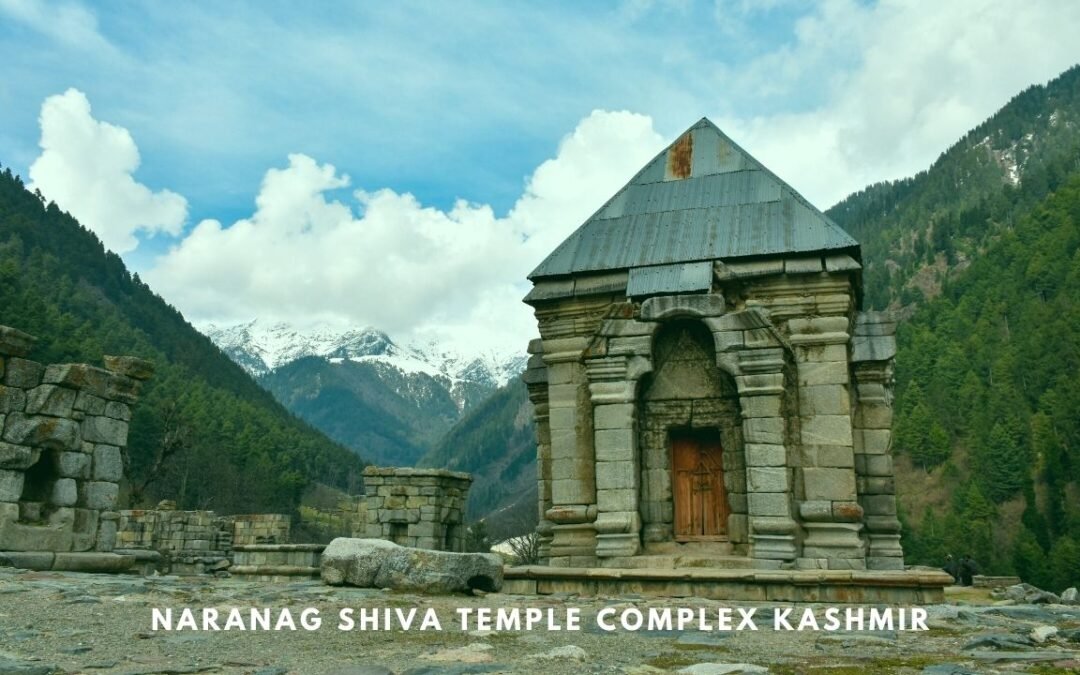
Hi..
Amazing information.. Thanks a lot..
Thank you so much!
It is very intresting artical. It is wondreful images.
Thank you!
Very informative. Visiting this temple tomorrow….